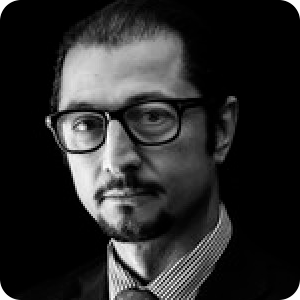The advance of the global energy transition towards renewables is directly proportionate to the demand for critical minerals such as lithium, cobalt, and nickel among others, which are spread across developing countries in massive amounts. The exploitation of mineral resources causes environmental damage at all stages of the mining process, and the negative consequences are often felt long after a mine or quarry has closed. While these minerals can boost the economy of the countries of origin, the main negative effects are the impacts on climate change, biodiversity loss and pollution. Can there be a win-win situation for developing countries to benefit from this growing demand while at the same time avoiding the consequences? Check out some expert opinions here.
Key Takeaways:
- According to World Mining Data 2025, global mineral production in 2023 was about 19.2 billion metric tons, continuing the long-term growth trend in global mining.
- Critical minerals offer economic opportunities for developing countries but, without careful management, they risk causing environmental harm, inequality, and social tensions.
- To harness the boom for critical minerals, developing countries need strong governance, local processing, and strict sustainability standards.
- A good mineral resources law should also reflect that the “ownership of a mineral is …vested in the people and the Government.”
DevelopmentAid: How can developing countries benefit from the growing demand for vital minerals while avoiding the negative risks associated with resource extraction?

“It is a proven fact that the current energy transition aiming to achieve net-zero by 2050 is a mineral transition, requiring upwards of 3.5 billion tons of minerals and metals at a scale never seen before. Developing countries rich in cobalt, lithium, nickel, and rare earths stand to benefit. However, past experiences show the risks of falling into the “resource curse” and discontent in mining communities. As such, for critical minerals to benefit the source countries, governments (both developed and developing) must strengthen governance frameworks to guarantee transparency in contracts, revenues, and supply chains. Just as was done with “blood” diamonds, the world needs responsible supply chains with enforceable human rights, labor, and environmental standards. Importantly, policy should steer local value addition processing and battery component manufacturing to foster spillover benefits to the broader economy. This can turn mineral revenues into long-term development gains. Consumers can pressurize big business for better traceability and responsible sourcing practices. Initiatives such as the Responsible Minerals Initiative, the Cobalt Industry Responsible Assessment Framework (CIRAF), and Better Mining are good steps forward. But to address the root causes of unsafe artisanal mining, especially for cobalt, requires coordinated action at local, national, and international levels to ensure that ‘clean’ critical minerals become a foundation for a just energy transition.”

“To harness the critical minerals boom for inclusive development, developing countries must adopt a multi-faceted strategy. First, they need to establish robust governance frameworks, including stable legal structures and balanced fiscal systems. This approach will attract specialized mining investment while guaranteeing fair returns to the national economy through taxation, royalties, and local job creation. A second critical step is to move up the value chain by encouraging in-country processing and refining where economically feasible, capturing greater economic benefits beyond raw material extraction. Finally, economic ambitions must be paired with stringent sustainability standards. World-class environmental and social regulations are essential, but they are insufficient without strong institutional oversight and the appropriate human capacity to enforce them. This balanced approach ensures countries can help to fuel the global energy transition while safeguarding their economies, communities, and environments for the future.”

“Mining policies in developing countries should be harmonized, ensuring consistency across states. In addition, licensing and permitting processes must be improved to facilitate the timely development of projects. Most importantly, investment in vital infrastructure such as transport, logistics, water, energy, and ICT to support growth in value chains is critical. Furthermore, establishing regional mining research hubs or centers of excellence in partnership with universities, industr,y and state research facilities with a focus on critical energy transition minerals would be welcomed. Finally, regional supply chains for local manufacturing and economic benefits should be developed including integration into global value chains. To sum up, developing countries must improve the supporting infrastructure for the critical minerals industry. A critical minerals certification scheme should be established to ensure environmental, social and governance compliance which would attract responsible investment in the region. Technology transfers through strategically partnering with global firms and other entities should be facilitated to build local expertise in refining and manufacturing, etc.”

“It is true that many developing country governments struggle with the appropriate governance of this sector – they have to satisfy the economic demands of growing (and increasingly younger) populations while also being responsible for the physical and social environment. Citizens of these countries are always asking their governments for more employment opportunities and express concern that international mining companies are benefiting unduly from mineral extraction, while local communities don’t see (or perhaps don’t fully understand) the benefits that they would like to receive. It is also true that many international mining companies operating in developing countries hold themselves accountable to international best-practice standards, standards that are often higher than those enforced by the host governments. Yes, that is obviously how we want companies to behave, but it does not reduce the responsibility of elected governments. However, the public sector in developing countries frequently does not have enough capacity (or technical and financial know-how) to exert the necessary governance. Moreover, governments are torn between the need for development (read: tax income, jobs) and the need to show environmental and social responsibility to their citizens. Citizens who are also voters. Mining projects have lead times that are measured in decades rather than years, while host governments are only in place for four or five years, and may find it very difficult to demonstrate development progress before the next election. Inclusive and sustainable development in the mining sector therefore, requires a close collaboration between the private and public sectors, ensuring governance in accordance with international best practice. At the same time, there should be near-perfect transparency in relation to the risks, costs and benefits that arise from the sector, as well as an impartial explanation of all these for the public. Democracy is key – not only for the public to fairly elect its leaders periodically, but also to facilitate public access to data, facilitated by public sector institutions such as the tax, environmental and other authorities. I would argue for stronger, more visible and more regular, structural collaboration between government authorities, and mining companies, as well as national and international industry associations such as the Chambers of Mines, the ICMM, etc. Usually, questions are asked of such institutions when there are problems, perhaps to assign blame. Instead, there should be a regular stream of news and information (the good, the bad and the ugly) from all these institutions to the public.”

“Developing countries stand at a pivotal moment as the global demand for critical minerals accelerates. These resources could unlock economic opportunities but, without careful management, they risk fueling environmental degradation, inequitable benefit-sharing, and social tensions. Landlocked developing countries (LLDCs), such as Mongolia, face an additional layer of challenges: their lack of sea access increases a dependence on transit countries and inflates the logistical and investment costs, often limiting the benefits of extraction. Mongolia, endowed with copper, lithium, and rare earths, exemplifies both the promise and risks of the critical minerals boom. Past mining practices reveal the dangers of resource dependency, while its geography underscores the need for a resilient infrastructure and strong regional cooperation. To avoid repeating the “resource curse”, LLDCs must establish transparent governance frameworks, align strategies with the UN Sustainable Development Goals, and channel revenues into long-term investments in education, healthcare, and infrastructure. Equally essential is the inclusion of local communities in decision-making to ensure trust and equitable benefit-sharing. Above all, attracting responsible, ESG-aligned investment is critical to financing infrastructure, advancing technology transfer, and developing domestic value-added industries. With strong institutions, inclusive governance, and quality investment partnerships, developing and LLDCs like Mongolia can transform the critical minerals boom into a pathway for sustainable and inclusive development.”

“The keyword here is “governance”. The mining laws of many developing countries are outdated and have failed to keep pace with modern legislative developments in extractives. Strong laws, and indeed contracts, are needed to ensure that the host country benefits the most; not just the elite. Most constitutions provide that mineral rights belong to the people and are to be used “to promote the public benefit”. A good mineral resources law should also repeat that the “ownership of a mineral is …vested in the people and the Government”. The law should also “regulate exploration, extraction and processing of minerals in a manner that encourages and facilitates the exploration, extraction and processing of minerals while recognizing, respecting and safeguarding the natural, social and cultural environment of the communities…” and “ensures an economic benefit …, with an appropriate financial return from mining, in a way that maximizes the benefit to future generations.”
See also: Global lithium industry: Five largest producing countries and mines
The global demand for critical minerals is not only shaping energy markets but also creating new roles in international development. This sector offers opportunities for professionals who want to ensure that mineral extraction becomes safer for sustainable growth. That is why, for candidates who are looking for new challenging positions, DevelopmentAid offers the Individual Professional Membership. This package allows members to access thousands of open positions in international development, tenders, and grants for individuals and many more useful tools. Members can even check salary trends in their field or contact relevant organizations directly to send their CVs and show their expertise. By saving time and resources, DevelopmentAid is a real “golden mine” for opportunities in the field.

